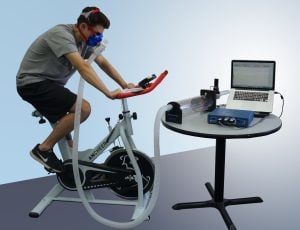Recording High-Quality Metabolic Data in Human Subjects
Date
Wednesday, November 29, 2017
Obtaining accurate and reproducible metabolic data, such as oxygen consumption (VO2), carbon dioxide production (VCO2) and respiratory exchange ratio (RER), from research participants at rest and during exercise provides detailed insights regarding human response and physiology. These measurements are extremely important to many research disciplines including exercise physiology, sports science, biomedical engineering, psychophysiology, and various consumer neuroscience applications. However, traditional methods of recording metabolic data in humans offer a myriad of challenges: most prominently, extensive and complex calibration processes, cumbersome operation and prohibitive costs. In contrast, BIOPAC’s new Metabolic System is an accurate, compact, and affordable turn-key solution for both research and physiology education applications. In developing this system, BIOPAC has uncovered a new way to easily obtain great metabolic data. During this webinar, Frazer Findlay and William McMullen will Key topics covered during this webinar will include…
Related Webinars: | Complete Form to Watch Webinar! |
For more information about BIOPAC events, check the BIOPAC Events Calendar or email support@biopac.com.

Stay Connected